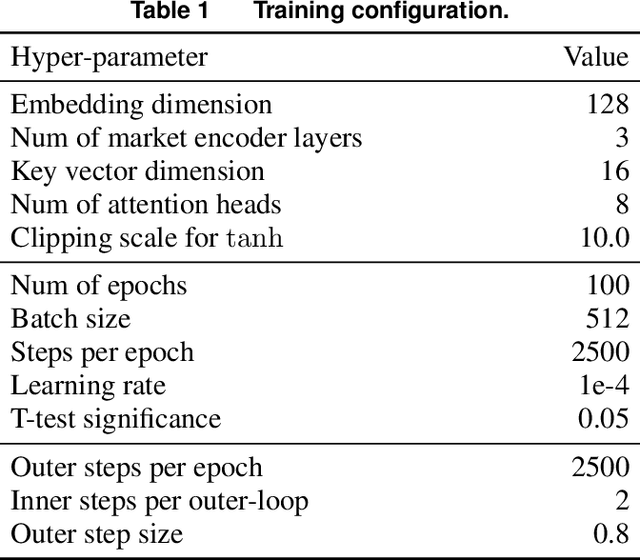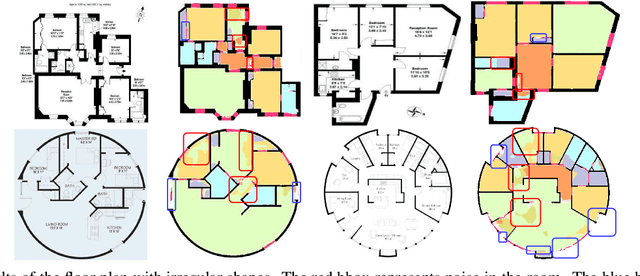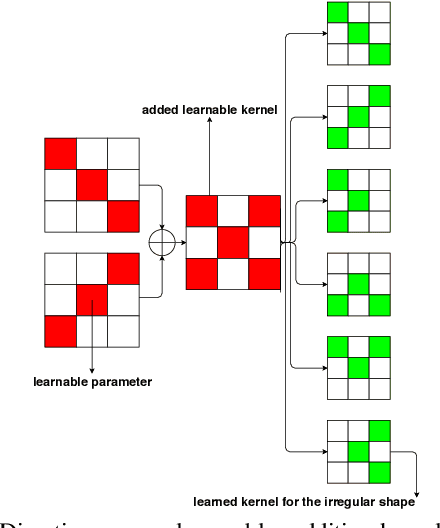Yuli Zhang
Trade-offs in Image Generation: How Do Different Dimensions Interact?
Jul 29, 2025Abstract:Model performance in text-to-image (T2I) and image-to-image (I2I) generation often depends on multiple aspects, including quality, alignment, diversity, and robustness. However, models' complex trade-offs among these dimensions have rarely been explored due to (1) the lack of datasets that allow fine-grained quantification of these trade-offs, and (2) the use of a single metric for multiple dimensions. To bridge this gap, we introduce TRIG-Bench (Trade-offs in Image Generation), which spans 10 dimensions (Realism, Originality, Aesthetics, Content, Relation, Style, Knowledge, Ambiguity, Toxicity, and Bias), contains 40,200 samples, and covers 132 pairwise dimensional subsets. Furthermore, we develop TRIGScore, a VLM-as-judge metric that automatically adapts to various dimensions. Based on TRIG-Bench and TRIGScore, we evaluate 14 models across T2I and I2I tasks. In addition, we propose the Relation Recognition System to generate the Dimension Trade-off Map (DTM) that visualizes the trade-offs among model-specific capabilities. Our experiments demonstrate that DTM consistently provides a comprehensive understanding of the trade-offs between dimensions for each type of generative model. Notably, we show that the model's dimension-specific weaknesses can be mitigated through fine-tuning on DTM to enhance overall performance. Code is available at: https://github.com/fesvhtr/TRIG
Toward Dependency Dynamics in Multi-Agent Reinforcement Learning for Traffic Signal Control
Feb 23, 2025Abstract:Reinforcement learning (RL) emerges as a promising data-driven approach for adaptive traffic signal control (ATSC) in complex urban traffic networks, with deep neural networks substantially augmenting its learning capabilities. However, centralized RL becomes impractical for ATSC involving multiple agents due to the exceedingly high dimensionality of the joint action space. Multi-agent RL (MARL) mitigates this scalability issue by decentralizing control to local RL agents. Nevertheless, this decentralized method introduces new challenges: the environment becomes partially observable from the perspective of each local agent due to constrained inter-agent communication. Both centralized RL and MARL exhibit distinct strengths and weaknesses, particularly under heavy intersectional traffic conditions. In this paper, we justify that MARL can achieve the optimal global Q-value by separating into multiple IRL (Independent Reinforcement Learning) processes when no spill-back congestion occurs (no agent dependency) among agents (intersections). In the presence of spill-back congestion (with agent dependency), the maximum global Q-value can be achieved by using centralized RL. Building upon the conclusions, we propose a novel Dynamic Parameter Update Strategy for Deep Q-Network (DQN-DPUS), which updates the weights and bias based on the dependency dynamics among agents, i.e. updating only the diagonal sub-matrices for the scenario without spill-back congestion. We validate the DQN-DPUS in a simple network with two intersections under varying traffic, and show that the proposed strategy can speed up the convergence rate without sacrificing optimal exploration. The results corroborate our theoretical findings, demonstrating the efficacy of DQN-DPUS in optimizing traffic signal control.
Communication Strategy on Macro-and-Micro Traffic State in Cooperative Deep Reinforcement Learning for Regional Traffic Signal Control
Feb 18, 2025Abstract:Adaptive Traffic Signal Control (ATSC) has become a popular research topic in intelligent transportation systems. Regional Traffic Signal Control (RTSC) using the Multi-agent Deep Reinforcement Learning (MADRL) technique has become a promising approach for ATSC due to its ability to achieve the optimum trade-off between scalability and optimality. Most existing RTSC approaches partition a traffic network into several disjoint regions, followed by applying centralized reinforcement learning techniques to each region. However, the pursuit of cooperation among RTSC agents still remains an open issue and no communication strategy for RTSC agents has been investigated. In this paper, we propose communication strategies to capture the correlation of micro-traffic states among lanes and the correlation of macro-traffic states among intersections. We first justify the evolution equation of the RTSC process is Markovian via a system of store-and-forward queues. Next, based on the evolution equation, we propose two GAT-Aggregated (GA2) communication modules--GA2-Naive and GA2-Aug to extract both intra-region and inter-region correlations between macro and micro traffic states. While GA2-Naive only considers the movements at each intersection, GA2-Aug also considers the lane-changing behavior of vehicles. Two proposed communication modules are then aggregated into two existing novel RTSC frameworks--RegionLight and Regional-DRL. Experimental results demonstrate that both GA2-Naive and GA2-Aug effectively improve the performance of existing RTSC frameworks under both real and synthetic scenarios. Hyperparameter testing also reveals the robustness and potential of our communication modules in large-scale traffic networks.
Deep Reinforcement Learning for Traveling Purchaser Problems
Apr 11, 2024



Abstract:The traveling purchaser problem (TPP) is an important combinatorial optimization problem with broad applications. Due to the coupling between routing and purchasing, existing works on TPPs commonly address route construction and purchase planning simultaneously, which, however, leads to exact methods with high computational cost and heuristics with sophisticated design but limited performance. In sharp contrast, we propose a novel approach based on deep reinforcement learning (DRL), which addresses route construction and purchase planning separately, while evaluating and optimizing the solution from a global perspective. The key components of our approach include a bipartite graph representation for TPPs to capture the market-product relations, and a policy network that extracts information from the bipartite graph and uses it to sequentially construct the route. One significant benefit of our framework is that we can efficiently construct the route using the policy network, and once the route is determined, the associated purchasing plan can be easily derived through linear programming, while, leveraging DRL, we can train the policy network to optimize the global solution objective. Furthermore, by introducing a meta-learning strategy, the policy network can be trained stably on large-sized TPP instances, and generalize well across instances of varying sizes and distributions, even to much larger instances that are never seen during training. Experiments on various synthetic TPP instances and the TPPLIB benchmark demonstrate that our DRL-based approach can significantly outperform well-established TPP heuristics, reducing the optimality gap by 40%-90%, and also showing an advantage in runtime, especially on large-sized instances.
A Dynamic Temporal Self-attention Graph Convolutional Network for Traffic Prediction
Feb 21, 2023Abstract:Accurate traffic prediction in real time plays an important role in Intelligent Transportation System (ITS) and travel navigation guidance. There have been many attempts to predict short-term traffic status which consider the spatial and temporal dependencies of traffic information such as temporal graph convolutional network (T-GCN) model and convolutional long short-term memory (Conv-LSTM) model. However, most existing methods use simple adjacent matrix consisting of 0 and 1 to capture the spatial dependence which can not meticulously describe the urban road network topological structure and the law of dynamic change with time. In order to tackle the problem, this paper proposes a dynamic temporal self-attention graph convolutional network (DT-SGN) model which considers the adjacent matrix as a trainable attention score matrix and adapts network parameters to different inputs. Specially, self-attention graph convolutional network (SGN) is chosen to capture the spatial dependence and the dynamic gated recurrent unit (Dynamic-GRU) is chosen to capture temporal dependence and learn dynamic changes of input data. Experiments demonstrate the superiority of our method over state-of-art model-driven model and data-driven models on real-world traffic datasets.
The Direction-Aware, Learnable, Additive Kernels and the Adversarial Network for Deep Floor Plan Recognition
Jan 30, 2020



Abstract:This paper presents a new approach for the recognition of elements in floor plan layouts. Besides of elements with common shapes, we aim to recognize elements with irregular shapes such as circular rooms and inclined walls. Furthermore, the reduction of noise in the semantic segmentation of the floor plan is on demand. To this end, we propose direction-aware, learnable, additive kernels in the application of both the context module and common convolutional blocks. We apply them for high performance of elements with both common and irregular shapes. Besides, an adversarial network with two discriminators is proposed to further improve the accuracy of the elements and to reduce the noise of the semantic segmentation. Experimental results demonstrate the superiority and effectiveness of the proposed network over the state-of-the-art methods.
 Add to Chrome
Add to Chrome Add to Firefox
Add to Firefox Add to Edge
Add to Edge